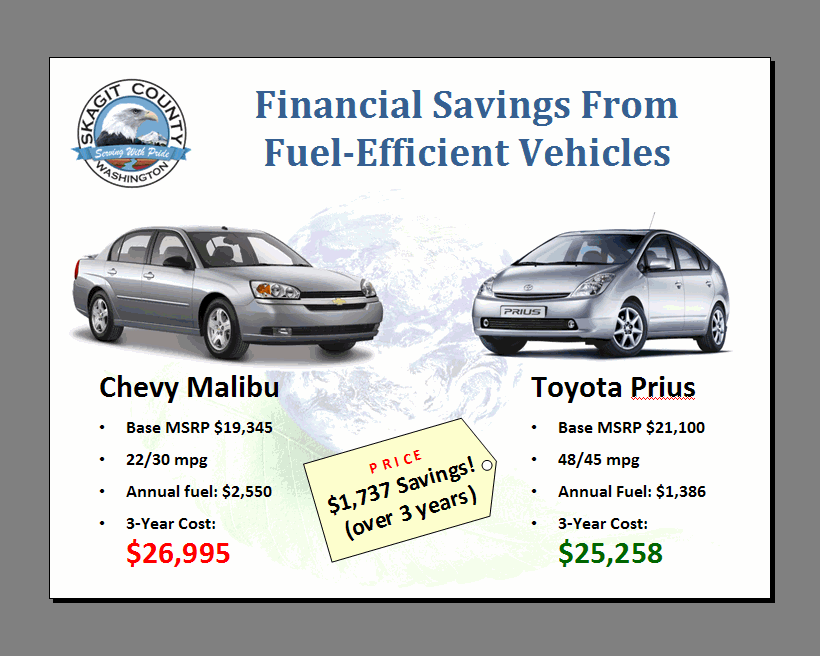Sustainability
Climate Change and Sustainability Initiative
| Fuel Efficiency |
|
Purchasing Standards
Skagit County is moving quickly to improve the fuel economy of its entire vehicle fleet. Following the preliminary recommendations of the Climate Action and Sustainability Taskforce’s Green Purchasing Workgroup, Skagit County is considering contracting with a fleet management consultant for analysis and recommendations on how to efficiently manage the 200 road vehicles the county owns, and is developing permanent rules on fleet purchasing. Electric Vehicles Skagit County has allocated money from our Energy Efficiency and Conservation Block Grant and from our vehicle expansion fund to purchase two new all-electric vehicles: one passenger car for mail delivery between the several office county buildings in Mount Vernon, and one cargo van for the facilities maintenance department to use to transport tools and equipment. (The department had been using a former coroner car that was long overdue for replacement.) The EECBG grant should also fund the construction of solar charging stations for each vehicle; one at the administrative campus on Continental Place, and one at the courthouse complex downtown Mount Vernon.
|
| Vehicle Fleet Management Review |
|
Skagit County retained
Steve Hennessey, from Hennessey Fleet Consulting, in late February 2010
to provide an analysis of Skagit County's Equipment Rental & Revolving
("ER&R") Fund Division. Hennessey examined the County's
current business practices and maintenance, fuel, and budget history in
order to: develop a business plan with equipment life cycles, vehicle
use policies, and rate methodology; review current rate calculation methods
with an eye toward incentivizing departments and users to reduce vehicle
and fuel use facilitate downsizing and facilitate purchasing more energy-efficient
vehicles; and review vehicle life cycles and the reserve account. Download
the final Vehicle Fleet Review 2010 (2MB). |






















